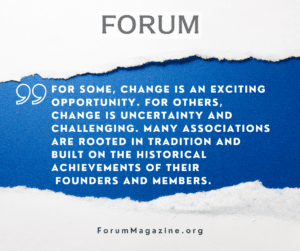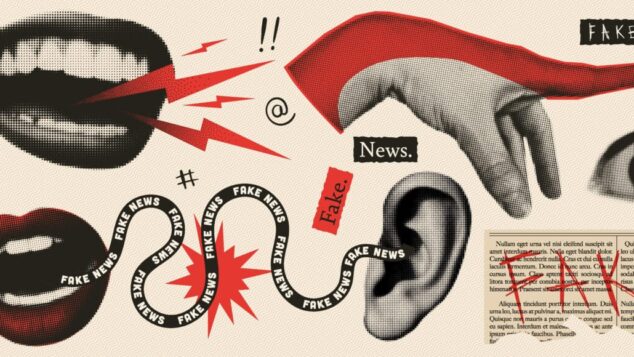The Rebranding Journey: Honoring the Past While Looking to the Future

Embarking on a rebranding initiative, may include renaming the entire organization, can feel like history is being forgotten. The following article explores the rebranding process and insights from Jennifer Swanson, former QUAD A director of marketing, and Martha Smith, AANA creative director. Both were integral in developing a rebranding strategy for their respective organizations. The goal of those strategies were to maintain the integrity and history of the groups while successfully positioning them for the future.
Case 1: QUAD A

“The name was a misnomer,” Swanson continues. “We started off on the wrong foot any time we were outside of the ambulatory space. When I started in 2018, I initiated discussions about this, starting with our CEO. It took a few conversations for the Board to understand that the name no longer aligns with who we are right now. We needed to determine if this sentiment was internal-only or if it extended externally as well.” Swanson began the process by conducting small focus groups before any additional resources were dedicated to this project. “I started internal stakeholder interviews with the board of directors, staff, and volunteer leaders delving into our brand’s impact, the emotions it evokes, our name, and our positioning within the industry relative to competitors. I also reached out to customer facilities, gathering feedback on the tagline, and gauging the inclusivity of the current name.” This initial research provided a solid foundation and affirmed to Swanson that facilities didn’t find the name inclusive of their identity. They felt excluded if not classified as an ASC.
Ultimately, the board funded a branding agency and initiated a formal brand study. Swanson interviewed several agencies and presented her top choices to a stakeholder group, who ultimately selected the finalist. The agency conducted a thorough branding analysis and research campaign, evaluating the organization’s identity, name, stakeholder perceptions, and industry positioning. “Engaging an external agency is critical,” Swanson advises. “If you don’t do that, you’re setting yourself up for failure. You do not want to rely on a hunch, as that could be an expensive mistake. Finding an agency with whom you have a good working relationship is key to your long-term success.”
While collaborating with the agency, Swanson informed her board of three possible outcomes based on the agency’s findings:
- We can stay the same—we are perfect the way we are.
- We can take a completely new approach and make a radical change.
- We can make a slight adjustment that will still honor our identity but also bring us into the future.
The organization chose option 3. For the final rebranding, Swanson states, “It was a slight change, but a very meaningful change. I tried to prepare the board that this initiative is a ‘glow up.’ We will honor your name and your roots as the physicians that founded it while aligning with the new facility accreditation space. Many stakeholders were already referring to the organization as QUAD A. That quickly emerged as one of two suggestions brought forward by the agency, and ultimately the final one brought before the board. After discussing this option and its rationale, highlighting that it’s historically honoring and forward thinking, the board agreed to the change.”
“Part of the ease of the transition was not to undergo a full rebrand, but a refresh. Having an agency partner to guide us through the necessary steps and set us up for success was invaluable,” Swanson emphasizes. “Our communication approach was strategic. We ensured that our messaging initially reached our internal stakeholders, such as surveyors, leadership, regulators, and others who were close to the process. We began incorporating updated imagery, new hashtags, and social posts with the new look and feel before officially changing the name and logo. This way, stakeholders gradually became accustomed to the changes.”
After the soft launch, QUAD A debuted a video with the old logo transforming into the new logo, along with the announcement of the updated name. QUAD A emphasized that it’s still the same accrediting organization stakeholders have grown to trust and know, but it is now positioned for the future and here to help you.
“This part was very important,” Swanson said. The brand refresh was one part of other technological initiatives occurring at QUAD A, and all communications intended to keep stakeholders informed about what to expect next.
Engaging frontline staff was a priority for Swanson. “From the outset, I ensured that our frontline accreditation specialists, who were handling calls, were informed about navigating the new updates on the website, understood messaging, and were prepared to address inquiries. It’s unfair to put anyone on the frontline without this information.” Furthermore, leadership and board members were given talking points about the brand refresh, ensuring a consistent voice that conveyed a very thoughtful, well-planned, and researched change.
Case 2: American Association of Nurse Anesthesiology
American Association of Nurse Anesthesiology (AANA) announced its new name and a refreshed logo, look, and feel for the AANA brand at its 2021 Annual Congress, but work had started long before to evolve the organization’s brand. Formerly, the organization was known as the American Association of Nurse Anesthetists.
AANA Creative Director Martha Smith describes the impetus for the change: “A successful rebrand has to start with the membership—it’s about the desire to express something about the association in a visual way that speaks to the members.” She continues, “AANA’s rebrand was successful because it was truly driven by the members, through a resolution that was voted on and passed at our 2020 Annual Congress. Because it was a member-driven directive, it gave us the mandate to not only update the name, but to think about how our brand shows up for the profession and in the lives of our members.”
Smith says she wanted to take a comprehensive and data-driven approach and start with a fresh perspective. AANA engaged with Vendi, an external agency. “Our vendor really did their homework. They interviewed all types of members, from lifelong members to students, to inform the changes. This process was not cooked up by a few people in a room. It was research-driven to ensure a complete picture of what members need the AANA to be in their lives,” Smith summarizes.
Working closely with the vendor, AANA created a rebranding committee. As logos and ideas were narrowed down, the member rebranding committee was presented options for feedback and selection.
Based on the qualitative and quantitative research, the brand strategy, name change, logo, key and segmented messaging and visual assets were developed. “With the rebranding, we developed a new, more sophisticated color palette. The research and member input came through in the marketing voice and tone, communication with members, and the overall spirit of the brand. AANA as an association positioned itself as a partner on the journey as opposed to a big brother over its members.”
Additionally, a big part of the rebrand was using real members in marketing materials, which allows certified registered nurse anesthetists (CRNAs) and students to see themselves and their colleagues as the face of the organization.
Overall, AANA wanted its members to know that while the branding may have changed, its core purpose remains dedicated to its long-standing history of supporting the nurse anesthesiology profession. The impending name change was public knowledge, but AANA waited to debut the rebrand visuals until its virtual 2021 Annual Congress.
Smith enthusiastically responds, “We wanted to make a creative splash. We created a video that walked the audience through AANA’s origins and history and showed how AANA has evolved over time. This is the latest chapter in making it an association that serves our members. Contextualizing this change as an evolution, rather than change for change’s sake, really impacted how well the rebranding was received.” The AANA rebrand received an overwhelmingly positive reception from its members and won several awards. “It’s not about winning the awards, but about being a winner in the eyes of your members. We’re all glad it was so well received.”
While rebrands target an external audience, Smith’s closing thoughts highlight the importance of also engaging association staff to rally them behind the rebrand and get them excited about how much the organization is gaining. “We rolled out our new logo and name to staff with printed Brand Standards Guides, a lunch-and-learn orientation, a branded Yeti and note of appreciation, and a cool pop-up pen caddy designed in-house. Today, all new staff members receive AANA-branded swag in a welcome box. It’s a very important first touchpoint with the AANA brand because it creates that positive feeling and energy that we want for AANA staff members,” Smith concludes. “We strive to help people feel pride in working for AANA and, at the same time, help members feel pride in belonging to their association.”
Conclusion
Several themes emerge from these two examples of successful rebranding initiatives:
- Don’t forget the past – Acknowledging the association’s history preserves its identity and values and shows respect for its legacy during the rebranding.
- Engage leadership and the Board – Involving top-level executives and the Board of Directors supports alignment, commitment, and strategic direction for the rebranding effort.
- Utilize an external agency – Collaborating with an external agency brings fresh perspectives, creative expertise, and a systematic approach to rebranding.
- Do your research – Thorough research helps in understanding market trends, stakeholder perceptions, and the competitive landscape, guiding informed rebranding decisions.
- Communication is key – Effective communication throughout the rebranding process fosters transparency, manages stakeholder expectations, and builds support for the changes.
- Engage your staff – Involving employees fosters buy-in, enthusiasm, and a sense of ownership, crucial for successful implementation and integration of the rebranding.
Swanson concludes, “A name change is a very natural progression for a brand. Within the association space, many professionals have undergone similar transitions. Utilize your network, as there are numerous experts available to offer their insights, share challenges and pain points, and describe their success stories.”
Tags
Related Articles
Ready for Anything: How to Prepare for Misinformation Online
This is the story of how an 8,000-member association faced down misinformation – and won.
You’ve Been Running GA4, What Now?
The Google Analytics 4 (GA4) conversion deadline last summer brought chaos to our marketing team…
The Rebranding Journey: Honoring the Past While Looking to the Future
Follow two organizations as they reassess their brands and transform their images to more accurately...





